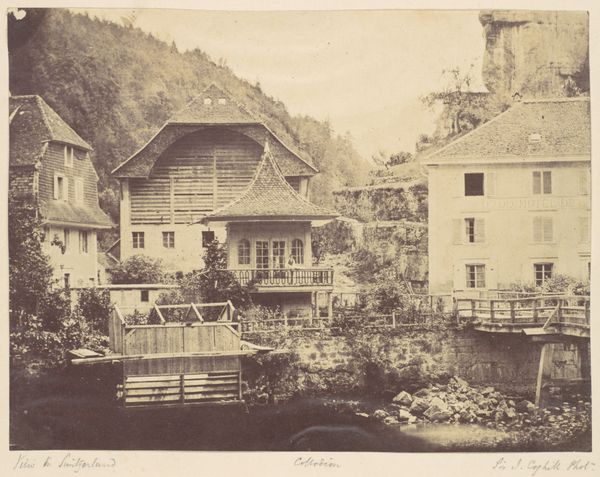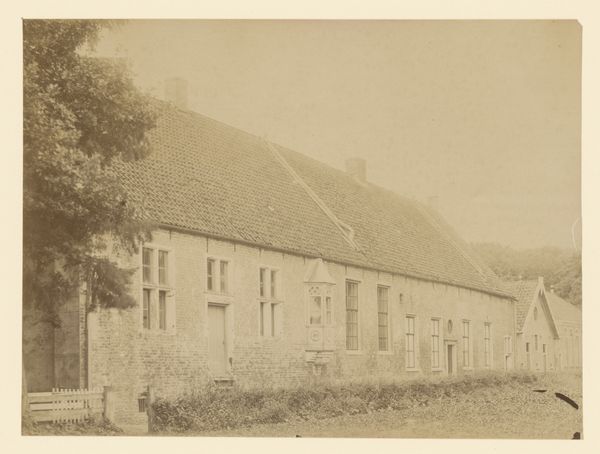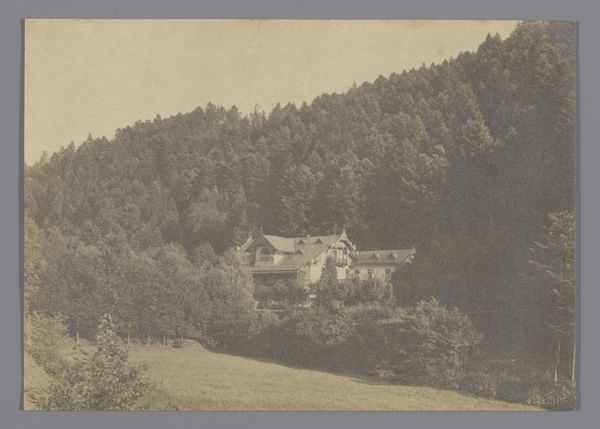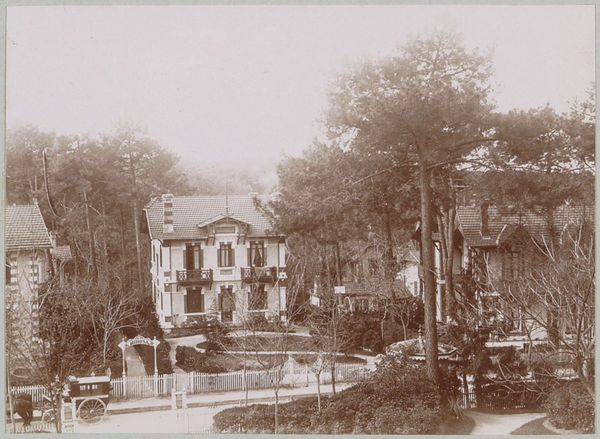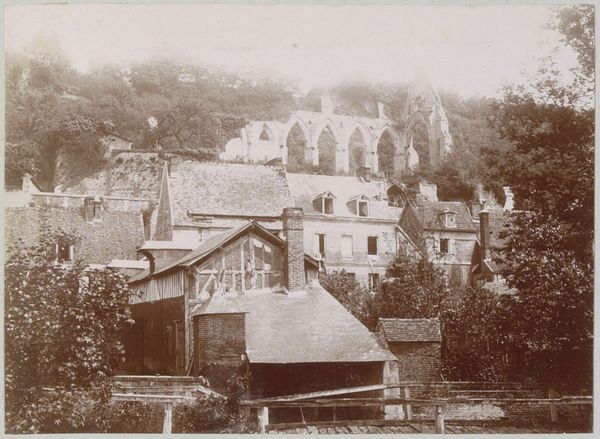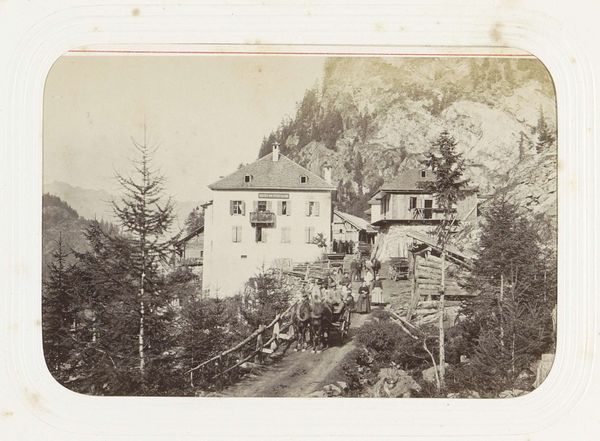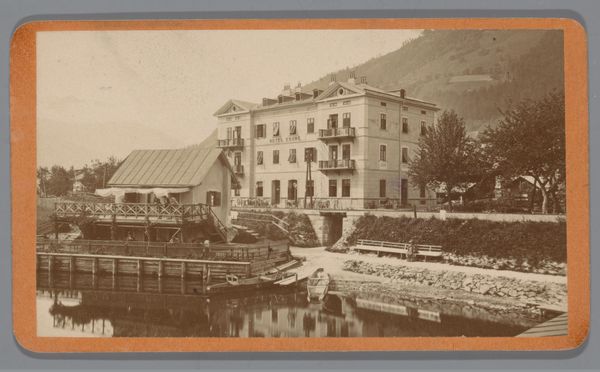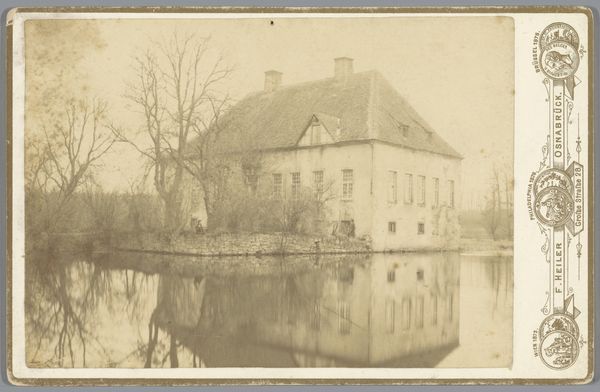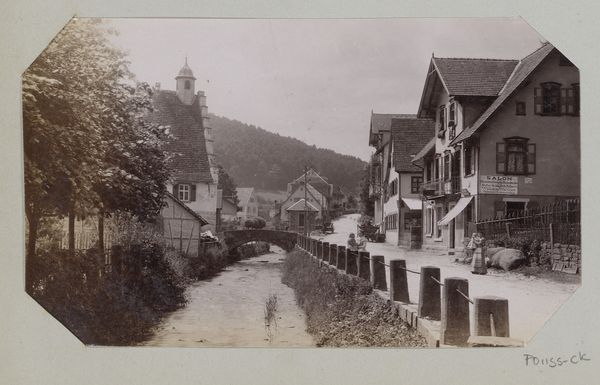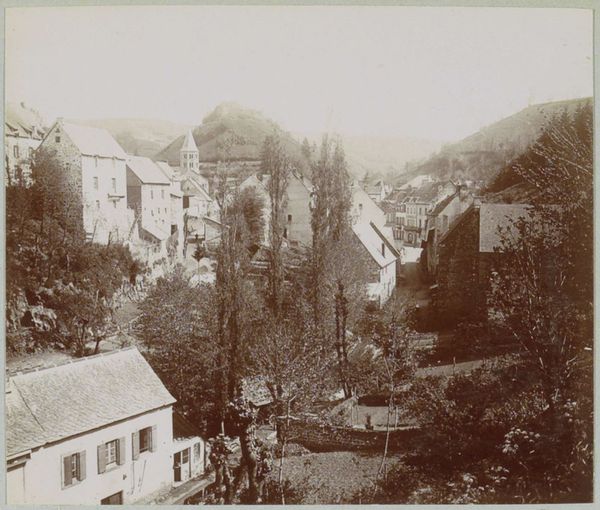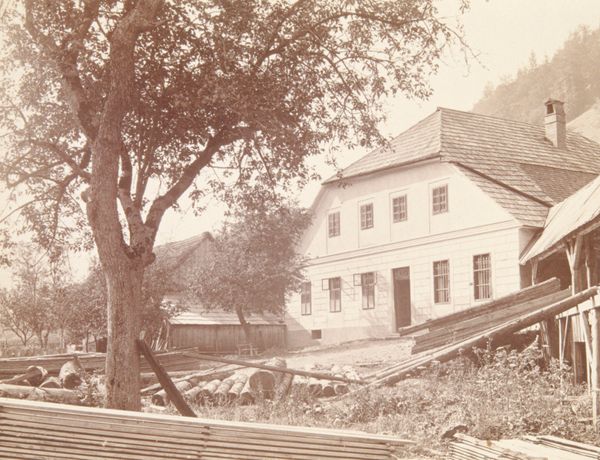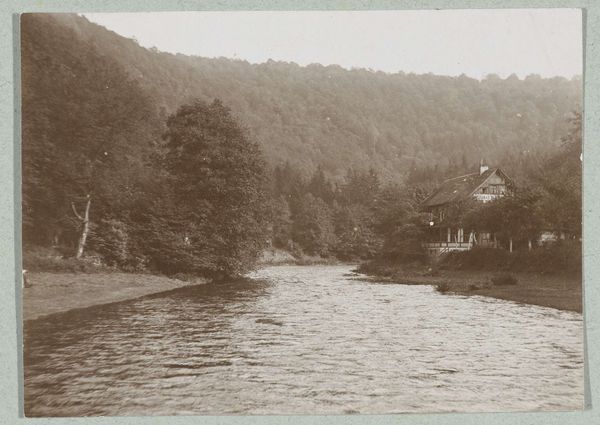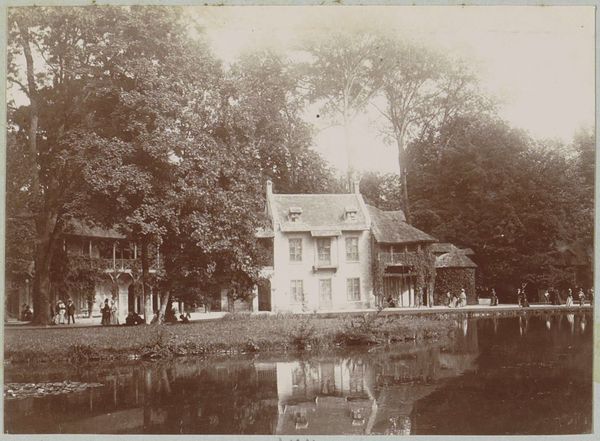
albumen-print, photography, albumen-print
#
albumen-print
#
16_19th-century
#
landscape
#
photography
#
albumen-print
#
realism
Dimensions: 3 15/16 x 5 1/4 in. (10 x 13.34 cm) (image)5 5/8 x 7 3/8 in. (14.29 x 18.73 cm) (mount)
Copyright: Public Domain
Editor: Here we have Josef Maria Eder's 1882 albumen print, Kirchberg an der Pielach, housed at the Minneapolis Institute of Art. It strikes me as quite a formal composition. There’s a very clear separation between the architecture and the landscape. How do you interpret this work through its formal elements? Curator: Indeed, the separation is quite deliberate. The sharp lines of the buildings contrast against the softer, blurred textures of the natural landscape, highlighting a structured formality. Observe the gradations of light across the façade; do they lend a sense of depth, or flatten the image? Editor: I think they create depth. The shadowed areas recede, making the building feel very three-dimensional. But, why albumen print? What does that medium contribute? Curator: The albumen process offers unparalleled detail, as evidenced by the clarity of the architectural details and the surface quality visible in the reflecting water. The sepia tone itself contributes to the mood, a gentle nostalgia for an idealized past perhaps. Notice how the linear precision of the architectural structures acts in dialogue with the slightly diffused mountain backdrop. Editor: So the sharpness is intentional. Does the interplay between sharpness and blur reinforce any symbolic intent here? Curator: Possibly. We might read the architecture as representing human order and the slightly blurred landscape as nature's chaotic beauty. They are visually balanced within the frame, inviting the viewer to mediate this visual tension between order and fluidity. This negotiation appears also within the contrasting planes in the artwork itself. Editor: This way of understanding really highlights how much you can derive through simply careful, formal observation. I was missing so much. Curator: Precisely. Often, the aesthetic impact lies not just in *what* is depicted, but fundamentally in *how* it is depicted. Consider the compositional and material components, and their interrelations become quite revealing.
Comments
No comments
Be the first to comment and join the conversation on the ultimate creative platform.
